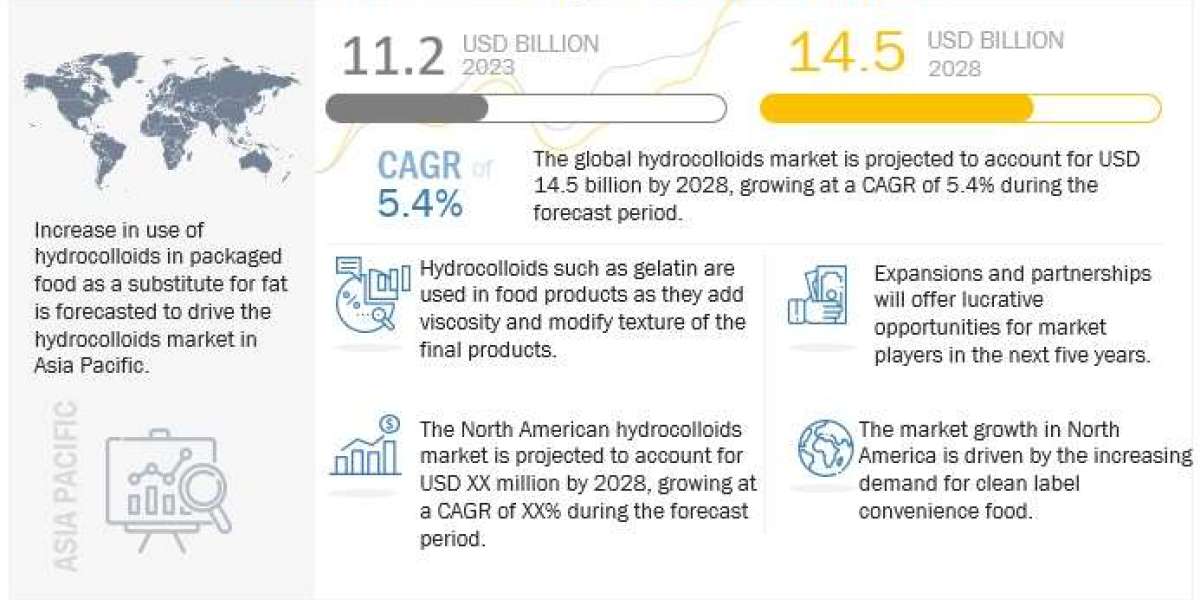The global hydrocolloids market is estimated to be valued at USD 11.2 billion in 2023 and is projected to reach USD 14.5 billion by 2028, at a CAGR of 5.4% during the forecast period. The exponential growth in the natural and clean-label food consumption across the food and beverage industry due to its growing awareness has influenced the use of hydrocolloids. Moreover, this has led to an increase in dependence on natural fibers and gums for functional properties, stability, safety, and quality of food products. According to the American Oil chemist society Journal of 2015, hydrocolloids, apart from imparting textural properties, also enhance the nutritional properties of the food as they contain nearly 60%-90% of dietary fibers.
Download PDF brochure: https://www.marketsandmarkets.com/pdfdownloadNew.asp?id=1231
In terms of type, pectin is estimated to be the fastest type segment during the forecast period
Pectin is an important polysaccharide with applications in food, pharmaceuticals, and many other industries. It is used as an emulsifier, gelling agent, thickener, stabilizer, and fat or sugar replacer in a low-calorie food. Pectin and pectin-derived oligosaccharides can also be used as important ingredients in functional food. Its importance in the food sector lies in its ability to form a gel in the presence of Ca2+ ions or a solute at low pH.
The seaweed segment by source in the hydrocolloids market is projected to grow at the highest CAGR during the forecasted period
Seaweed-derived hydrocolloids mainly include alginate, carrageenan, and agar, which are important parts of the food ingredient industry. The three types of hydrocolloids are natural hydrophilic polymers existing in the cell walls and extracellular matrixes of brown and red seaweeds that can be extracted through a series of chemical and physical processes. Owing to their excellent thickening, gelling, film-forming, and other novel properties, alginate, carrageenan, and agar are widely used in the functional food industry. Seaweed hydrocolloids find application as thickeners, stabilizers, coagulants, and salves (in the wound and burn dressings) and they are used as materials to produce bio-medical impressions in the food, pharmaceutical, and biotechnology industries.
The Cosmetics & personal care products segment is projected to be the second-largest market in the forecasted period
Recently, hydrocolloids have found a fit in the personal care industry, often replacing synthetic chemicals with similar properties. Driven by consumers’ thirst for “all-natural” products, many manufacturers are trying to leverage the long history of hydrocolloids in the food industry for personal care applications. Therefore, with wide consumer interest in natural cosmetics, the number and demand for natural texturizers have grown strongly in recent years.
Speak to Analyst: https://www.marketsandmarkets.com/speaktoanalystNew.asp?id=1231












